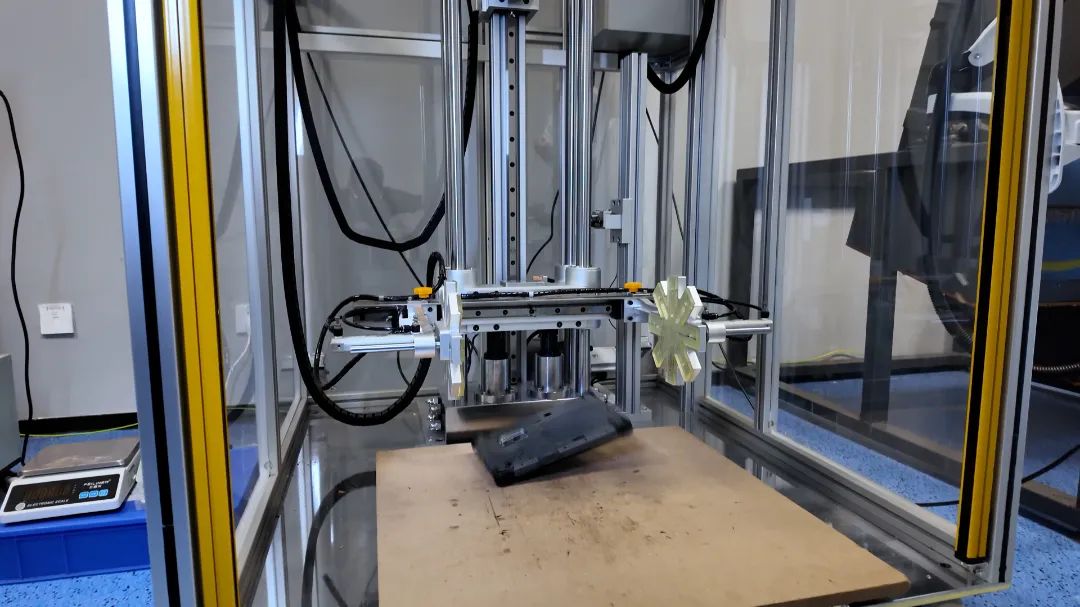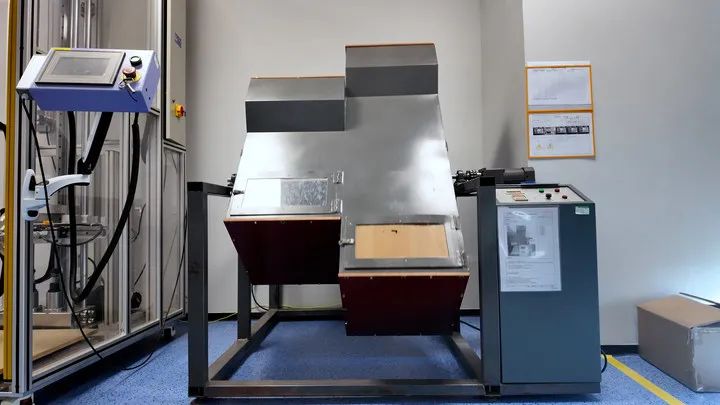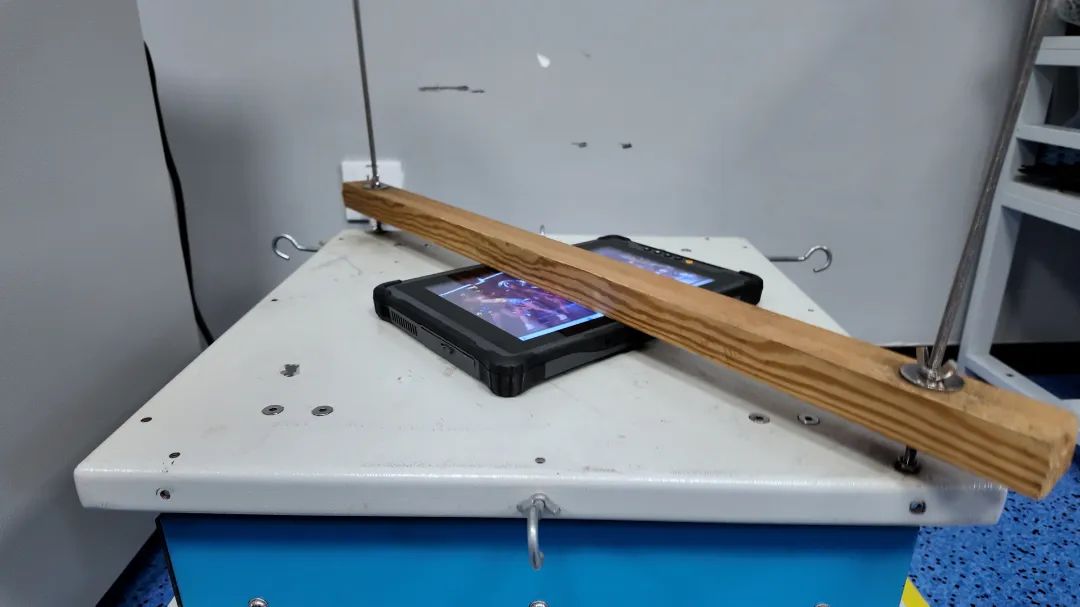

Ensuring Reliability Through Rigorous Drop and Vibration Testing
In the world of rugged computing, reliability is paramount. Professionals in industries like logistics, manufacturing, and field services rely on rugged laptops, rugged tablets, and industrial PCs to perform flawlessly despite accidental drops, impacts, rain, or extreme temperatures. At ONErugged, we prioritize this critical need, investing heavily in research, development, and testing to deliver industry-leading rugged devices that set the standard for durability and quality. In the first episode of Extreme Testing Ground, we invite you inside ONErugged’s state-of-the-art reliability laboratory to explore the rigorous testing processes that ensure our products thrive in the toughest conditions.
ONErugged’s commitment to excellence begins with our advanced, multi-million-dollar in-house laboratory. Equipped with cutting-edge testing equipment and staffed by expert technicians, our facility simulates real-world scenarios to validate the durability of our rugged computers. From drops and vibrations to extreme environmental conditions, our tests are designed to push devices to their limits, ensuring they meet the demands of professionals in challenging environments. This episode focuses on our drop reliability laboratory, where we conduct exhaustive tests to achieve MIL-STD-810 certification, the global benchmark for rugged durability.
The MIL-STD-810 standard, originally developed for U.S. military equipment, is a comprehensive framework for assessing a product’s resilience in harsh environments. Widely adopted in industrial and consumer electronics, it ensures that devices like rugged laptops and rugged tablets can withstand drops, vibrations, extreme temperatures, and more. ONErugged’s products undergo a full suite of MIL-STD-810 tests, including drop, vibration, and thermal stress evaluations, earning certifications that validate their reliability in extreme conditions.
Depending on the model, ONErugged devices are certified under MIL-STD-810G or the updated MIL-STD-810H standards. While MIL-STD-810H introduces refinements, the core testing parameters for rugged devices—such as environmental conditions, test metrics, and evaluation criteria—remain consistent across both versions. This ensures that our products deliver the same high level of durability, whether certified under MIL-STD-810G or MIL-STD-810H.
Drop testing is a cornerstone of MIL-STD-810 certification, simulating accidental falls that devices may encounter in the field. ONErugged’s drop reliability testing is exceptionally thorough, exceeding standard requirements to ensure our rugged computers can withstand repeated impacts. Each device undergoes 26 drops—covering all six faces, eight corners, and twelve edges—to ensure comprehensive impact resistance. Post-test, our devices remain fully functional, with intact structures, responsive screens, touch interfaces, and operational buttons, proving their exceptional durability.

The directed free-fall drop test evaluates a device’s ability to withstand impacts from a specified height. Most ONErugged products are tested at a 1.22-meter drop height onto a plywood surface, simulating real-world accidents. Select models even pass 1.5-meter to 1.8-meter drop tests, offering enhanced durability for specialized applications. The testing parameters are as follows:
Standard: MIL-STD-810H w/Change 1:2022, Method 516.8, Section 4.6.5 (Procedure IV)
Environment: Temperature 15°C–35°C, Relative Humidity 25%–75%
Equipment: Drop Test Machine
Drop Height: 122 cm
Drop Count: 26 drops (6 faces, 8 corners, 12 edges)
Surface: Plywood
ALT for Image 3: ONErugged’s drop test machine simulates a 1.22-meter free-fall drop to validate rugged computer durability.

The tumble drop test replicates continuous impacts from multiple angles, mimicking scenarios where devices may roll or fall repeatedly. ONErugged devices undergo 100 cycles of 0.5-meter tumble drops in a rotating drum lined with steel plates. For devices 8 inches or smaller, the tumble drop height is increased to 1 meter, ensuring superior resilience. The testing conditions include:
Environment: Temperature 15°C–35°C, Relative Humidity 25%–75%
Equipment: Tumble Drop Chamber
Drop Height: 50 cm (8 inches and above), 100 cm (below 8 inches)
Drop Speed: 10 drops per minute
Drum Material: Steel Plate
ALT for Image 4: ONErugged’s tumble drop chamber tests a rugged tablet through 100 cycles of continuous impacts.

To validate the durability of our Corning Gorilla Glass or Panda Glass screens, ONErugged conducts steel ball impact tests. A 64-gram steel ball is dropped from 110 cm onto the screen’s center, repeated three times. This test ensures the glass’s hardness and impact resistance, guaranteeing that our rugged devices maintain functionality even after significant screen stress.
Environment: Temperature 15°C–35°C, Relative Humidity 25%–75%
Equipment: Steel Ball Impact Tester
Steel Ball Weight: 64 g
Drop Height: 110 cm
Test Area: Screen Center
ALT for Image 5: A steel ball impact test evaluates the durability of ONErugged’s glass screens under high-impact conditions.

Vibration testing is another critical component of MIL-STD-810 certification, simulating the high-frequency vibrations encountered during transportation or field use. ONErugged employs random vibration testing, which uses variable amplitudes and frequencies to closely mimic real-world conditions, unlike sinusoidal testing. Our devices are tested across X, Y, and Z axes for 1 hour per direction, totaling 3 hours, with a frequency range of 5–500 Hz and acceleration root mean square (RMS) values from 0.21 G to 1.08 G.
The results demonstrate ONErugged’s commitment to durability: our devices maintain structural integrity and operational stability, proving their reliability in dynamic environments. The testing parameters are:
Standard: MIL-STD-810H w/Change 1:2022, Method 514.8C-I
Environment: Temperature 15°C–35°C, Relative Humidity 25%–75%
Equipment: 4T Vibration Test Platform
Frequency Range: 5–500 Hz
Vibration Directions: X, Y, Z axes
Acceleration RMS: 0.76 G (X-axis), 0.21 G (Y-axis), 1.08 G (Z-axis)
Duration: 1 hour per direction, 3 hours total
ALT for Image 6: ONErugged’s vibration test platform subjects a rugged device to 3 hours of random vibration testing.
In Extreme Testing Ground: Episode 1, we’ve provided a first-hand look at ONErugged’s drop and vibration testing processes, showcasing the rigorous standards that define our rugged laptops, rugged tablets, and industrial PCs. Our state-of-the-art laboratory ensures that every device meets and exceeds MIL-STD-810 requirements, delivering unmatched reliability for professionals worldwide. From 1.22-meter drops to 100-cycle tumble tests and high-intensity vibration challenges, ONErugged devices are engineered to perform in the toughest conditions.
Join us for Extreme Testing Ground: Episode 2, where we’ll test ONErugged devices in extreme temperatures, from -30°C freezing cold to 60°C scorching heat. Discover how our rugged technology solutions continue to lead the industry in durability and innovation.